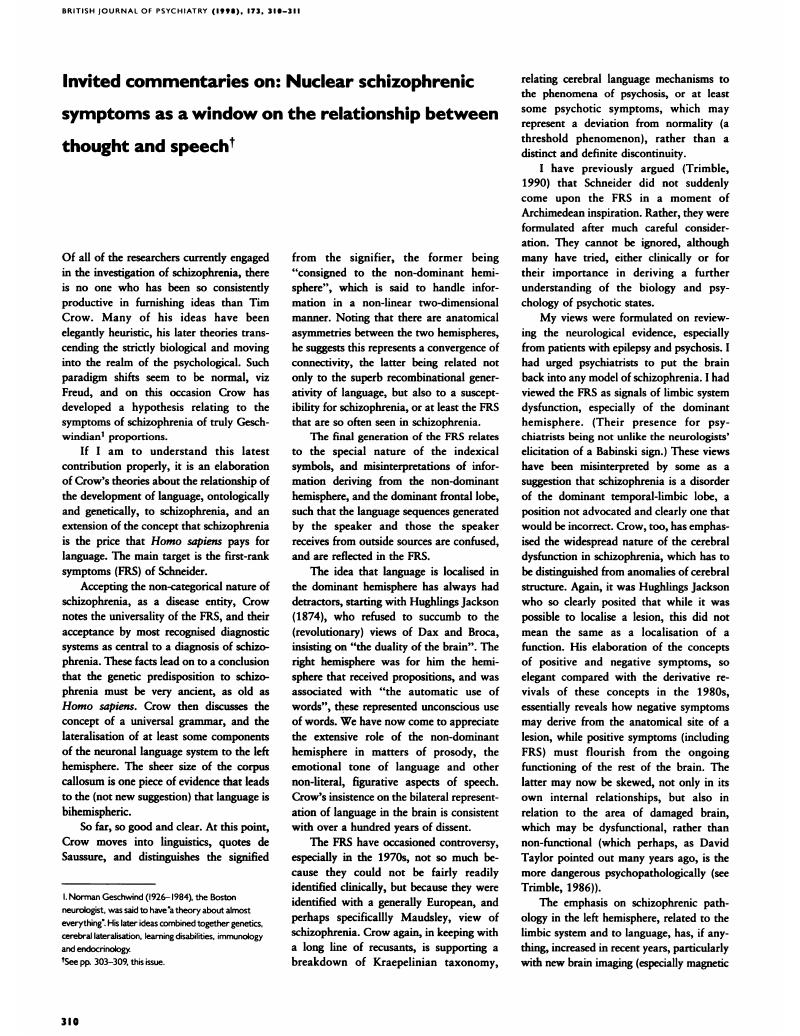No CrossRef data available.
Article contents
Invited commentaries on: Nuclear schizophrenic symptoms as a window on the relationship between thought and speech
Published online by Cambridge University Press: 03 January 2018
Abstract
An abstract is not available for this content so a preview has been provided. Please use the Get access link above for information on how to access this content.

- Type
- Papers
- Information
- Copyright
- Copyright © 1998 The Royal College of Psychiatrists
References
Frith, C. D. (1992) The Cognitive Neuropsychology of Schizophrenia. Hove: Lawrence Erlbaum.Google Scholar
Hare, E. (1986) Was insanity on the increase? In Contemporary Issues in Schizophrenia (eds Kerr, A. & Snaith, P.), pp. 63–83. London: Gaskell.Google Scholar
Hughlings Jackson, J. (1874) On the nature of the duality of the brain. Medical Press and Circular, I, 19–63.Google Scholar
McGuffin, P., Farmer, A. E., Gottesman, I. I., et al (1984) Twin concordance for operationally defined schizophrenia. Archives of General Psychiatry, 41, 541–545.CrossRefGoogle ScholarPubMed
Trimble, M. R. (1986) Positive and negative symptoms in psychiatry. British Journal of Psychiatry, 148, 587–589.CrossRefGoogle ScholarPubMed
Trimble, M. R. (1990) First-rank symptoms of Schneider. A new perspective?
British Journal of Psychiatry, 156, 195–200.CrossRefGoogle ScholarPubMed



eLetters
No eLetters have been published for this article.